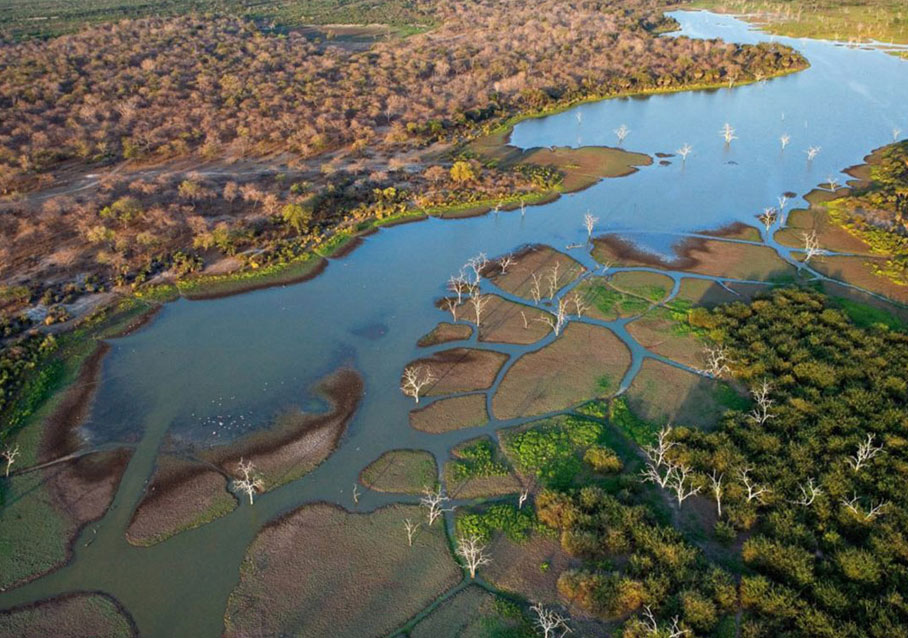Ruaha National Park 6 Day Tour
Ruaha is one of Tanzania’s best kept secrets! It’s previous inaccessibility means that this park has remained unchanged for centuries. Bordered on the east by the Great Ruaha River and the west by Mzombe River, visitors are struck its the beauty and vast expanse of wilderness stretching down towards the hazy blue hills of the Southern Highlands. The terrain is varied and fascinating with wild fig trees, rare baobab forests and gorges of glowing orange sandstone. The rivers contain swirling rapids and deep pools inhabited by crocodiles and hippos.
There is a permanent hunting ground for lions, jackals, hyenas and the rare and beautifully marked wild dogs. They prey on zebras and numerous antelopes, with both the stunning roan and sable antelope found here as well as greater and lesser kudu. There are also thousands of elephants and buffalo. Eurasian migrating birds flock to Ruaha twice a year (March/April and October/November) to join the already high number of resident species like kingfishers, hornbills, egrets, shimmering sunbirds and plovers.
Selous Game Reserve 6 Day Tour
Enter Africa’s largest protected area uninhabited by man, where Tanzania’s greatest population of elephants wander in an area bigger than Switzerland! The Selous (pronounced “Seloo”) is a World Heritage Site, in which the lucky few can experience a safari in absolutely wild and unspoiled bush. The reserve is named after Englishman, Frederick Courtney Selous – conservationist, hunter, explorer and author, whose adventure books on Africa became best sellers in Victorian England. The park varies from rolling grassy woodlands and plains, to rocky outcrops cut by the Rufiji River – the lifeblood of the park, whose tributaries form a network of lakes, lagoons and channels. Volcanic hot springs even burst forth in places. The Rufiji offers a superb method of game viewing especially during the dry season when animals congregate.
Selous contains about one third of all the wild dogs in the world. Their need to roam vast areas and their formidable hunting skills have caused many to be shot by farmers, but here in Selous they have boundless woodlands and savannahs in which to roam. Along the Rufiji River, an array of grazing antelopes, crocodiles and hippos are commonly seen as well as black and white colobus monkeys in the riverine forests. During the dry season from June to October, the concentration of animals along the river is astonishing. Linked to the Rufii is Lake Tagalala where waterbuck, reedbuck and bushbuck gather at the water’s edge. Magnificent sickle-horned sable and curly-horned greater kudu tend to keep to the longer grass and wooded shrubby areas. In the dry season an ancient migration of elephants takes place between the Selous and Mozambique’s Niassa Game Reserves. This is one of the largest natural trans-boundary eco-systems in Africa and at the last consensus it was estimated that 64,400 elephants roam the two parks, with 84% on the Tanzanian side. Fierce tiger fish and smooth slippery vandu catfish are caught in the rivers. The latter is equipped with primitive lungs allowing it to cross land for short distance in an attempt to find water water during the dry season.
Mikumi National 6 Day Tour
Mikumi National Park is on the northern border of Africa’s biggest game reserve – the Selous – and is transected by the surfaced road between Dar es Salaam and Iringa. Its around 5 hours drive to Mikumi from Dar es Salaam and it a thoroughly attractive goal for a self-contained weekender out of Dar es Salaam, or as an initial pit stop on a more extensive safari through southern Tanzania.
The open horizons and abundant wildlife of the Mkata Floodplain, the popular centrepiece of Mikumi, draw frequent comparisons to the more famous Serengeti Plains. Common animals that can be seen here are Lions, giraffes, elephants, buffalos, zebras. Sable antelopes and kudus also can be seen in Mikumi.
Lake Eyasi 6 Day Tour
Lake Eyasi is just after one hour of dusty driving south-west of Karatu and the Ngorongoro Crater one arrives at the northern shore of Lake Eyasi, a mildly alkaline lake stretching for about 50km to the south-west. To the north-east the horizon is dominated by the Crater Highlands, to the north, beyond an escarpment the plains of the Serengeti. Over 100 years ago when the stronger Masai tribes moved into the Ngorongoro Crater and Serengeti, the Datoga, the Hadzabe and other indigenous bushmen living there were pushed south. Many made Lake Eyasi and its surrounding bush and forests their home. You can visit Datoga and Hadzabe people and to know how they are living in the area and what they are facing. The Wildlife in Tanzania is a must!





